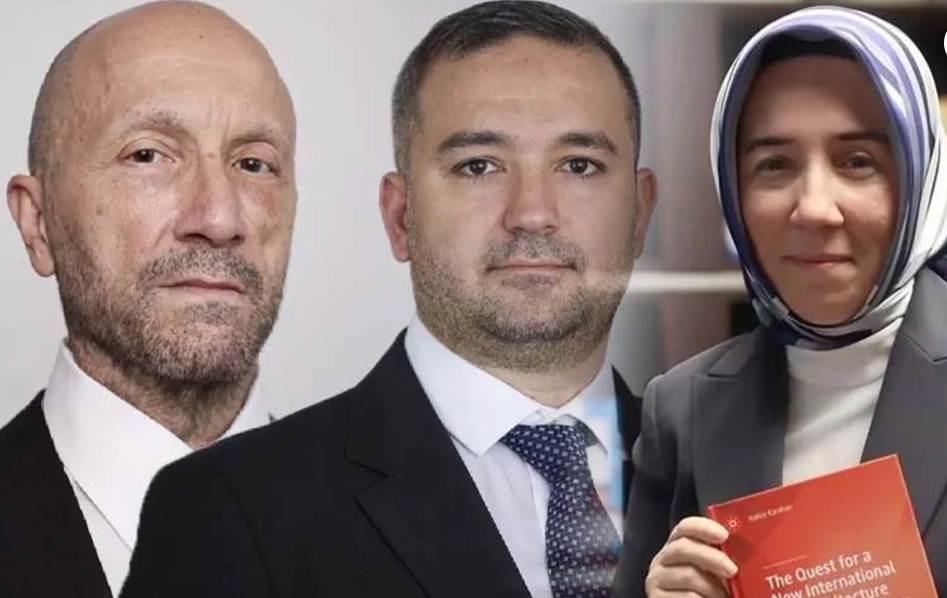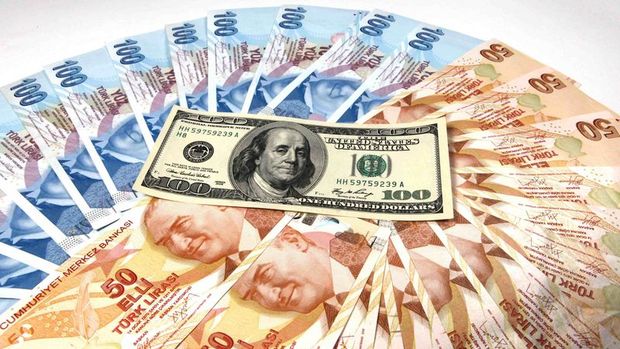Turkey’s central bank shows muscle with 500 bps rate hike: What’s next from here?
 CBRT TCMB
CBRT TCMB
The Monetary Policy Committee (MPC) of the Central Bank of the Republic of Turkey (CBRT) raised the policy rate from 45 percent to 50 percent. The bank also announced it returned to “the interest rate corridor” set at +/- 300 bp around the policy rate.
In the first interest rate decision made after the appointment of Central Bank Governor Fatih Karahan on February 3, replacing Hafize Gaye Erkan, the bank, which kept the policy rate unchanged at 45%, announced that it had ended the interest rate hikes it had started after the elections in May last year.
Due to increasing inflationary pressures and the accelerating depreciation of the Turkish lira, the bank switched to a tighter monetary policy. Hence the decision to raise interest rates comes in response to a mild currency attack amid escalating inflation, inadequate policy rates, and a declining credibility of the central bank, coupled with concerns regarding potential further political interference.
While 20 of the 24 economists participating in the Foreks News survey expressed the expectation that the interest rate would be left unchanged, 3 of them expected the interest rate to be raised by 250 basis points and 1 by 500 basis points. In the survey, the median interest rate forecast of 11 economists who gave their opinions for the end of 2024 was 45.00 percent.
The central bank acknowledges the persistent strength in domestic demand and the worsening inflation outlook, with both inflation expectations and actual inflation rising in February, particularly due to the persistent pressure on services inflation. It commits to maintaining a tight monetary policy stance, anticipating a decline in inflation in the second half of 2024 as domestic demand cools down, expectations improve, and the Turkish lira appreciates in real terms. However, if disinflation does not materialize as expected the bank pledges to implement further tightening measures.
The move certainly will help in two fronts:
- Foreign investor interest in Turkish financial markets remains high. However, many of these investors have hesitated to enter the Turkish bond and equity markets due to the policy rate lagging behind the inflation rate. Additionally, there are concerns about potential political interference in the orthodox policy implementation of the Şimşek team.With only a few days remaining until the local elections, a rate hike could reassure foreign investors that monetary policy will continue to be steered in the right direction post-election, and that the new economic team will remain intact. This could stimulate foreign inflows starting from April and persisting throughout the year, aiding the Central Bank of Turkey (CBRT) in replenishing its depleted reserves.Over the past four weeks alone, the CBT has expended approximately USD 20 billion to manage the depreciation of the Turkish lira. The CBRT’s net reserves was a negative $60.5 billion shortly after the elections, the net reserves decreased to negative $35.8 billion by 2023YE. However, as of March 19, they further contracted to negative $62.5 billion. This marks a substantial deterioration in the CBRT’s reserve position over the past eight months, dispelling any previous claims of robust reserve growth. Losing such a substantial amount of reserves to manage the Turkish lira is regrettable, especially considering that the Central Bank of the Republic of Turkey (CBRT) could have convened an extraordinary Monetary Policy Committee (MPC) meeting to implement a 500 basis points rate hike.
2. As locals observe the accumulation of reserves, increasing deposit rates, and the appreciation of the Turkish lira (TL), it is likely to alleviate their panic. This could incentivize them to reduce dollarization and partially shift back to TL, especially as they observe year-on-year inflation decreasing in the second half of 2024.
The newly announced rate corridor empowers the Central Bank of the Republic of Turkey (CBRT) to increase its funding rate to 53% (simple) if deemed necessary. Consequently, it is likely that the CBRT will refrain from an immediate rate hike at its April Monetary Policy Committee (MPC) meeting.
The current management of the Central Bank of the Republic of Turkey (CBRT) is anticipated to employ the rate corridor to implement further tightening measures in the immediate future. However, it’s worth noting that the rate corridor, introduced back in 2010 with a significantly wide margin similar to the present, can dilute the CBRT’s messages regarding the policy rate and harm the disinflation efforts. Past experiences in Turkey have demonstrated that the misuse of the rate corridor, particularly to conceal rate cuts, has contributed to sustained higher inflation levels.
Now, the March 2024 Consumer Price Index (CPI) inflation expectations stand around 4.2%, and year-on-year CPI inflation is anticipated to reach 75% in May 2024. The significant decrease in CPI inflation during the summer months will primarily be attributed to base year effects. Achieving the CBRT’s CPI target of 36% by the end of 2024 necessitates substantial foreign inflows into Turkish financial markets to facilitate Turkish lira appreciation and alleviate inflationary pressures. Additionally, a contraction in domestic demand is essential. Therefore, it is imperative for the CBRT to implement further rate hikes, possibly by at least 500 basis points, to attain its targeted CPI inflation level.
It’s worth noting that without implementing stricter controls on government spending (fiscal tightening through expenditure cuts rather than additional tax increases), the effectiveness of monetary policy in addressing Turkey’s hyperinflation issue in a sustainable manner will be constrained. The end of year 36% CPI target still looks unattainable under current circumstances. That is in the absence of a matching fiscal policy.
The Central Bank of the Republic of Turkey’s (CBRT) CPI targets for 2025 and 2026, set at 14% and single-digit levels respectively, seem unachievable. Meeting these targets would require additional efforts on the reform front, including measures to ensure the separation of powers within Turkey’s political system and bolster judiciary independence.
Here is the note issued with the rate decision:
The Monetary Policy Committee (the Committee) has decided to raise the policy rate (the one-week repo auction rate) from 45 percent to 50 percent. The Committee has also decided to adjust the monetary policy operational framework by setting the Central Bank overnight borrowing and lending rates 300 basis points below and above the one-week repo auction rate, respectively.
In February, led by services inflation, the underlying trend of monthly inflation was higher than expected. While imports of consumption goods and gold slowed down and contributed to the improvement in the current account balance, other recent indicators imply that domestic demand remains resilient. Stickiness in services inflation, inflation expectations, geopolitical risks, and food prices keep inflation pressures alive. The Committee closely monitors the alignment of inflation expectations and pricing behavior with projections, and the impact of wage increases on inflation.
In response to the deterioration in the inflation outlook, the Committee decided to raise the policy rate. Tight monetary stance will be maintained until a significant and sustained decline in the underlying trend of monthly inflation is observed, and inflation expectations converge to the projected forecast range. Monetary policy stance will be tightened in case a significant and persistent deterioration in inflation is foreseen. The decisiveness regarding tight monetary stance will bring down the underlying trend of monthly inflation through moderation in domestic demand, real appreciation in Turkish lira, and improvement in inflation expectations. Consequently, disinflation will be established in the second half of 2024.
The Committee continues to implement macroprudential policies in a way to preserve the functionality of the market mechanism and macro financial stability. In this context, financial conditions were tightened and monetary policy transmission was reinforced with the measures taken in March. Monetary transmission mechanism will continue to be supported in case of unanticipated developments in credit growth and deposit rates. Market liquidity will be closely monitored and sterilization tools will continue to be effectively used whenever needed.
Taking into account the lagged effects of monetary tightening, the Committee will make its policy decisions in a way that will create monetary and financial conditions necessary to ensure a decline in the underlying trend of inflation and to reach the 5 percent inflation target in the medium term.
Indicators of inflation and underlying trend of inflation will be closely monitored and the Committee will decisively use all the tools at its disposal in line with its main objective of price stability.
The Committee will make its decisions in a predictable, data-driven and transparent framework.
The summary of the Monetary Policy Committee Meeting will be released within five working days.




